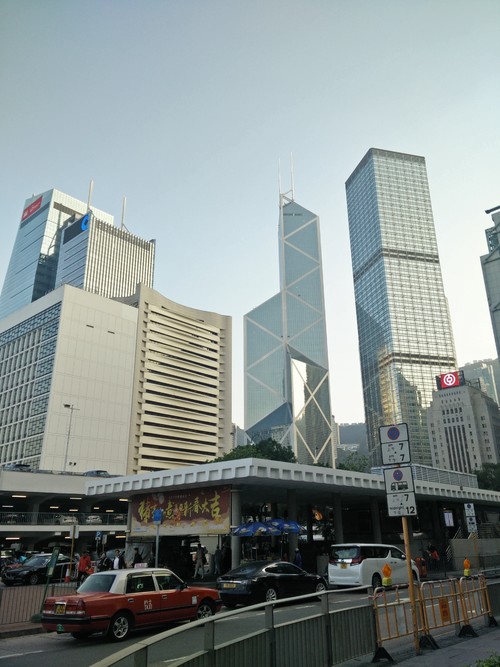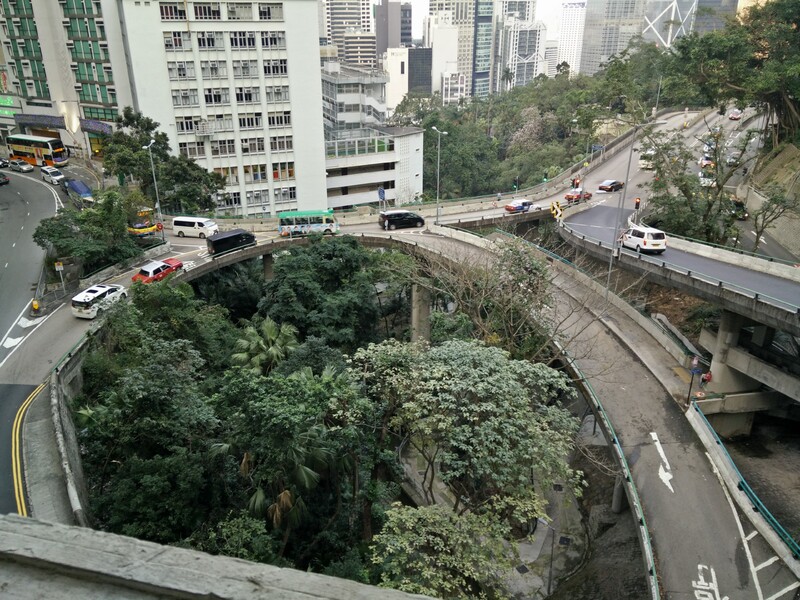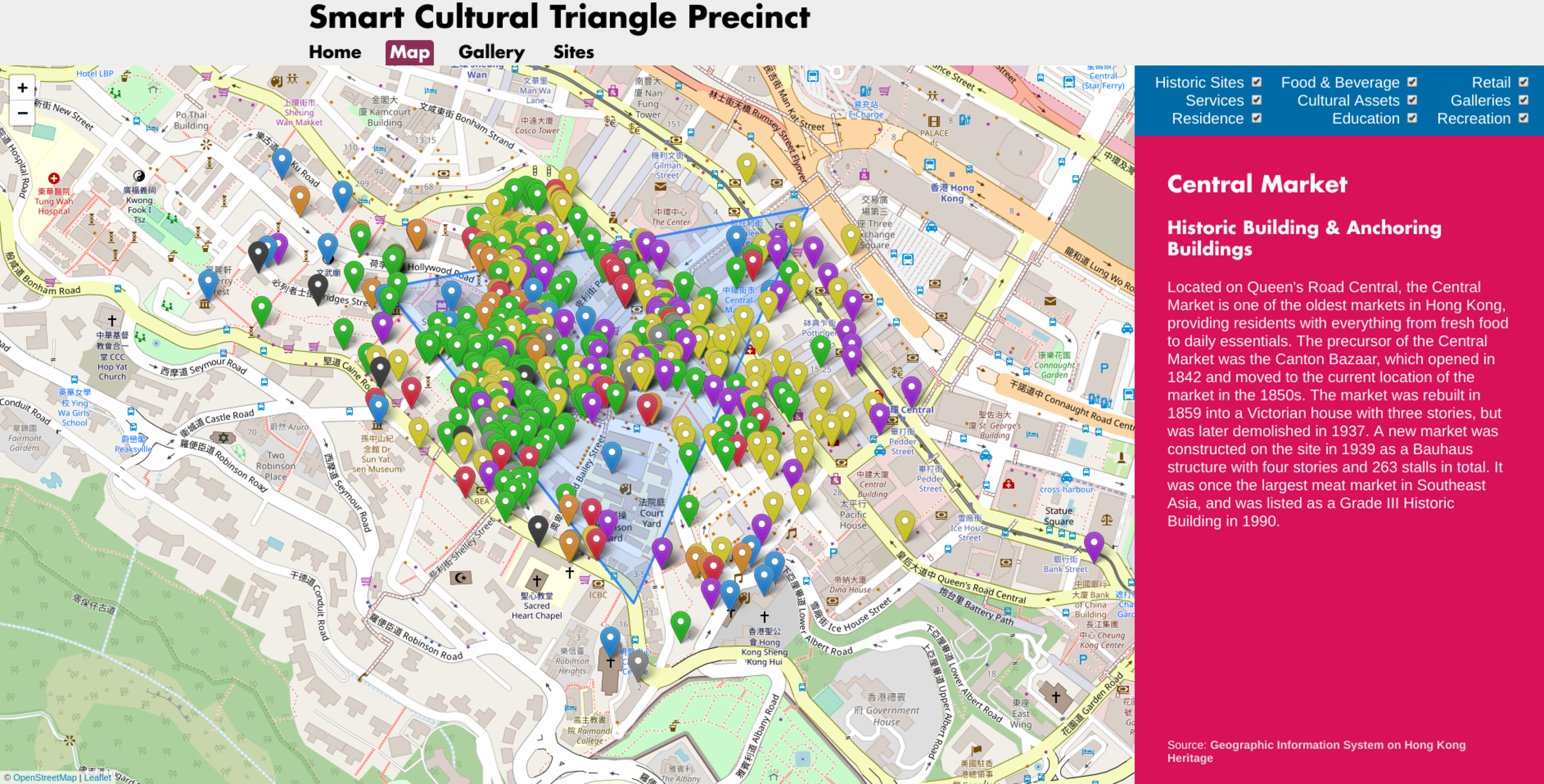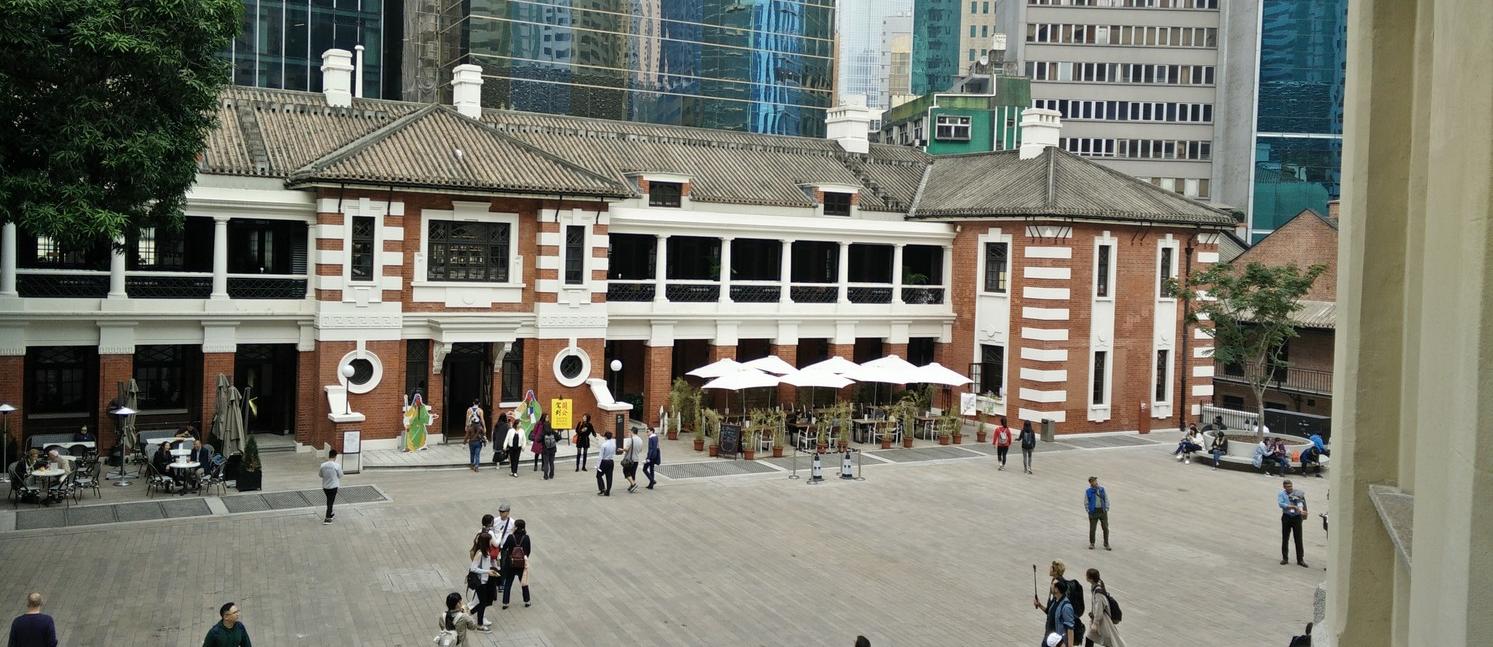HONG KONG HISTORIC CONSERVATION
Summary
I worked with a team of three other WPI students in Hong Kong for two months on the preservation and promotion of a historically significant precinct in the Central District. For the project, I created a website prototype as a proof of concept digital platform for our sponsors.
Introduction

In January 2019 I went to Hong Kong with 22 other WPI students to complete my Interactive Qualifying Project (IQP), a requirement for graduation. In Hong Kong, I was part of a group of four students working on a project for the Institute for Sustainable Urbanisation, a non-profit public organization founded in 2014 and funded by the Hong Kong government and private donations. Their mission is to promote livable, walkable, and sustainable cities worldwide.
Our project focused on conserving the historic heritage of an area in the Central District, the business heart of Hong Kong. This area, known as the Smart Cultural Triangle Precinct (SCTP), contains a lot of unique history and culture, and redevelopment projects threaten its old buildings. The SCTP project aims to help preserve and promote these buildings as a cohesive cultural precinct.
My team researched historic conservation in Hong Kong and other cities around the world, conducted a survey of locals and tourists in the area, and interviewed experts and stakeholders to learn more about the challenges involved with SCTP project. We conducted a walkability assessment of streets eleven streets in the area to determine what needs to be done to make it more accessible, and planned a walking tour to promote its history. Finally, we created a fully-functional website as an informational platform for the precinct.
Background
The SCTP is a triangular area in the Central District defined by three major historic sites at its corners:
- Tai Kwun—Formerly the Central Police Station and Victoria Prison, this complex includes some of the oldest British colonial buildings in Hong Kong. In recent years it has been rennovated and reopened in 2018 as a center for arts and entertainment.
- PMQ—This buildings stands on the grounds of the first government primary and secondary school in Hong Kong. The original building was destroyed in World War II, and in 1951 the British constructed the Police Married Quarters on the site. This building housed high ranking married police officers and their families until 2000, when it as rennovated and turned into commercial space.
- Central Market—One of Hong Kong's oldest markets, this site originally opened in 1842, and provided locals with stalls for produce, seafood, daily essentials, and services like tailoring and knife sharpening. The the building that currently stands on the site was built in 1939, and is currently under rennovation, expected to open in 2024.
The triangle is bisected by the Central–Mid-Levels Escalator, the world's longest outdoor covered escalator system and a popular tourist attraction.
Methods and Results
We accomplished our objectives using the following methods. We conducted surveys with locals and tourists and interviewed shopkeepers, experts and stakeholders and synthesized the results in our report. In the survey, we asked about people’s opinions on the current city walk in the SCTP, and most of them were not aware of the walking tours but showed an interest in one with more cultural landmarks and historical heritage. When asked about a digital platform to get information about the area, most people chose a website among the options of blog, mobile app and pamphlet, and wanted to see event and entertainment information about the SCTP, which guided our work on the city walk and website.

From our interview results, we found that although most shopkeepers think promoting the SCTP will be helpful for their business, there is still a lack of knowledge of the history of the area among them. Most of the experts we interviewed suggested that the government should preserve the heritage in the Central District as an area, not just individual buildings, and creating the SCTP will promote the preservation efforts. A digital platform such as a website and a walking tour could be helpful for public engagement, especially with the younger generation. As for stakeholders, they are more concerned about the interests of the group that they represent. They suggested public awareness could be promoted by providing updated walking tours and including interesting stories to attract both locals and tourists. They said the government should value historic buildings of local communities, and try to provide more affordable place in sites like PMQ for public engagement.
We carried out case study research on existing similar platforms focusing on Hong Kong and other cities. We determined what content was needed and desired by stakeholders and the public based on data gathered from the survey and research. One thing that our group noticed when researching websites and apps was that we should make ours have a very user friendly and visually appealing interface to attract more people. A website was the favored option in our survey, and websites are cheaper and easier to develop and maintain than apps or physical platforms like pamphlets or brochures. They also have a wide reach, as anyone with internet connectivity and a web browser can access it at any time for free.

We also observed many streets within the precinct, and made notes of specific qualities about each of the streets. Many of the observations that we made were about the general characteristics of the street, such as whether it was narrow or wide, the slope, and any obstacles that were around, including cars and people. These specific things are hard to change about a street, but the things that can be changed are safety, signage, cleanliness and sometimes accessibility. Fixing small things like these can be helpful in the long run to promote and preserve the SCTP.
Recommendations
Based on our results, we developed the following nine recommendations, divided into three groups: those related to the walking tour, suggestions about the website, and ideas for future research.
Walking Tour—From the results of the survey and our walkability assessment, here are some recommendations for stakeholders:
- To help promote the SCTP, we recommend that the government improve cleanli ness, add railings to streets with narrow sidewalks and busy traffic, and add signage in more locations in the area, including bigger signs at the entrances to important sites.
- We propose our walking tour plans to the ISU as a guideline for the further im- provement of their walk, in the case that the Central–Mid-Levels Escalator is under construction. See Sections 4.4.2 and 4.4.3 of the full report for details.
- Tour organizers should include practical information and interesting stories and cultural landmarks such as H6 Conet, Hong Kong News-Expo, and Pak Tsz Park, and historic sites such as Man Mo Temple and the Duddell Street Steps.
Website—Based on our experience developing the website prototype, here are the recommendations we suggest for the stakeholders and future research on the topic:
- Because locations of shops and restaurants can change frequently, the ISU should hire some maintainer to update the information on the map page at regular intervals. As development projects are completed, some of the information on the site will become outdated too. For example, the page on the Central Market should be updated once construction on the market has been completed.
- The site could be updated with information about currently ongoing events in the SCTP. Our survey respondents were split on the question of what information they would like to see from an online platform, but the two most popular responses were “News and Events Information” and “Entertainment Information.” The website could serve as a valuable source of information on events in the area. Again, this would require a maintainer to keep the information up to date.
- More interactive features such as a public forum or a blog with public comments could be added. Our team determined this would be a useful way for locals and tourists to interact and learn more about the history and current state of the area, as well as voice their opinions and concerns about it.
General Recommendations and Further Research—Here are our general recommendations for stakeholders in the SCTP area and future groups that continue to work on this project.
- Our interviews show that most preserved buildings are public or government sites, and private buildings are still at risk. Therefore, we suggest that the Urban Renewal Authority (URA) should make an effort to preserve private buildings that are important to the local community.
- We recommend that the managers of each historic and cultural site keep the sites open and accessible to the local small businesses so that they can remain economically stable and the historic sites can sustain themselves.
- For future groups working on the SCTP project, we recommend they research what needs to be done to make an area more walkable, how online platforms can be used to effectively promote areas like the SCTP, and what work has been done at the Central Market and other historic sites around Central. If a future group uses a survey, we would recommend they plan to conduct it for a longer period of time, and translate it into more languages, such as Korean and Japanese.
We hope that the implementation of one or more of these recommendations can get more people engaged in the preservation of historic sites in the Central District of Hong Kong.

Conclusion
This IQP was certainly an enlightening experience for me, spending two months in a foreign culture working on a primarily social science project. My team did a lot of work that I didn't have time to mention on this page, but if you're interested feel free to read the entire 90 page, 20 MiB paper we wrote. Also, if you're interested in learning more about the SCTP, check out the website I made.